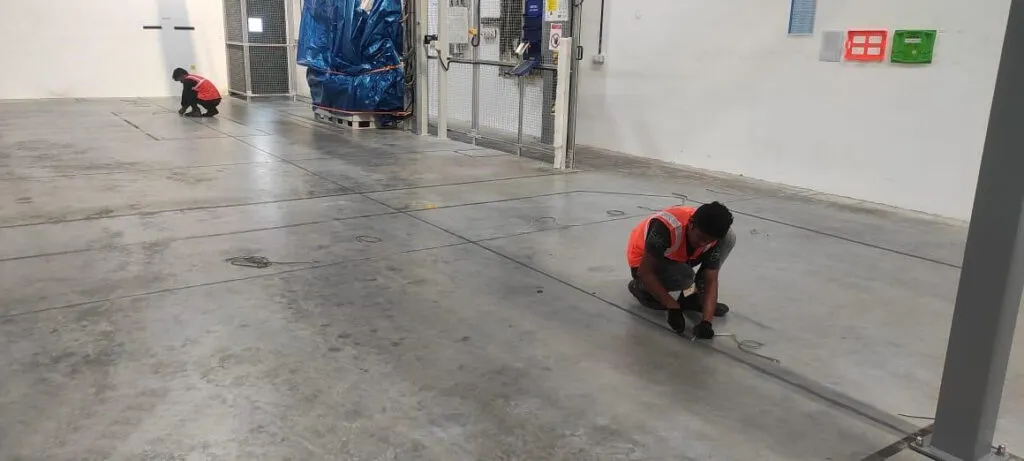Polished concrete floor industrial application is well established and widely accepted. It serves to provide a durable smooth surface, capable of withstanding static and dynamic loads, suitable for many different industrial facilities. However, it may not provide many performance attributes such as jointless, seamless surface, chemical resistance, smooth movement of trolleys and forklifts and torques associated with rotating machinery and may not completely prevent dust generation.
Hence, when an industrial client approached us for refurbishing a floor that can provide all of the above performance characteristics. Neocrete suggested its Neocrete HDF, which is a high-strength, abrasion-resistant, seamless PU flooring system. It is composed of a complex blend of resins and additives that makes the product capable of operating between -40°C to +120°C with a uniform surface texture.
Its advantages include;
- High chemical resistance
- Joint less, monolithic flooring and easily cleanable
- Excellent bond to concrete
- Quick setting, thus leading to early return to service.
- Abrasion and scratch resistance
What made Neocrete stand apart from its competitors is its understanding of polished concrete and what needs to be done to ensure the adhesion of PUCC with the existing surface. It was used in the project due to its excellent properties and ease of application. PUCC exhibits great ductility and durability properties due to the formation of dense microstructure. It has the combined properties of polyurethane and Portland cement. It does not require adhesives as it has excellent bonding characteristics.
The sequence of application procedure were as followed;
- Scarifying the surface to provide mechanical key
- Application of Neoflor Primer-S, a unique epoxy primer to provide high level of adhesion
- Spreading of 50-80 gsm glass mesh cloth over the primed surface in wet condition and allowed to dry overnight
- Apply one more coat of Neoflor Primer-S followed by quartz broadcasting and allowed to dry
- Remove excess sand, cut grooves as per spec, and apply 2mm scratch coat of Neocrete HDF to obtain jointless, seamless base surface
- After curing overnight, apply 3mm thick Neocrete HDF as a wear-resistant top coat.
- After completing yellow line marking as per customer’s requirements, one coat of silicone-epoxy hybrid sealer is applied to obtain stain & oil resistant floor.
1. Scarifying the surface to provide mechanical key

2.Application of Neoflor Primer-S, a unique epoxy primer to provide high level of adhesion

3.Spreading of 50-80 gsm glass mesh cloth over the primed surface in wet condition and allowed to dry overnight

4.Apply one more coat of Neoflor Primer-S followed by quartz broadcasting and allowed to dry

5.Remove excess sand, cut grooves as per spec, and apply 2mm scratch coat of Neocrete HDF to obtain jointless, seamless base surface

6.After curing overnight, apply 3mm thick Neocrete HDF as wear-resistant top coat

7.After completing yellow line marking as per customer’s requirements, one coat of silicone-epoxy hybrid sealer is applied to obtain stain & oil resistant floor


FINISHED FLOOR


Conclusion
The project was completed as per customer’s functional requirements with the right product and application procedure. Neocrete products were used to provide a higher-performing sealed surface with excellent surface regularity and enhanced mechanical resistance.


